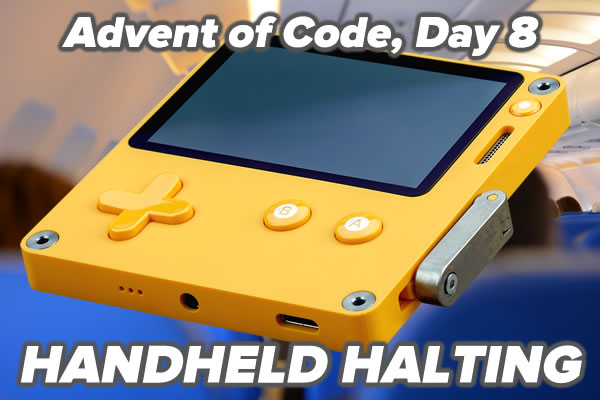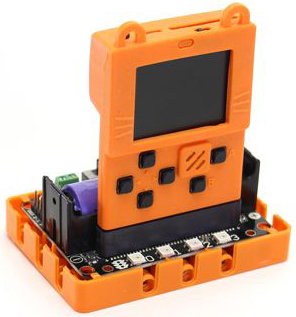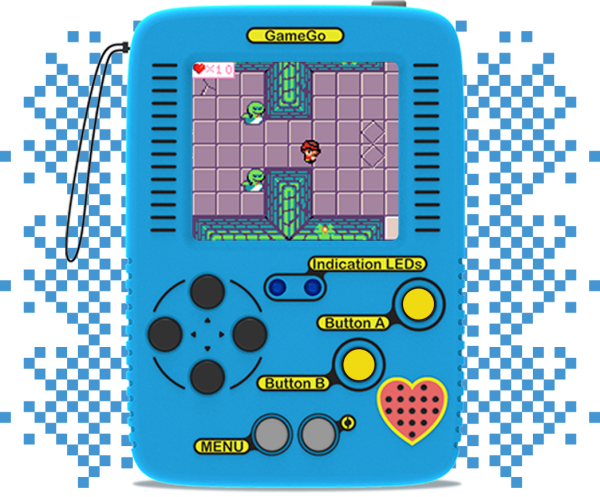This is an experiment!
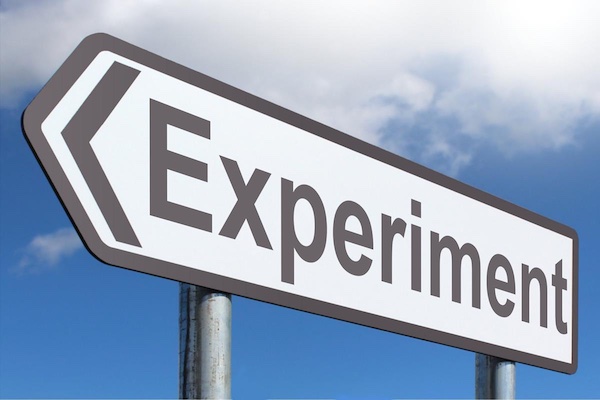
Each week, I publish a listing of tech, entrepreneur, and nerd online events by and for people in Tampa Bay and surrounding areas. But what if I tried expanding the scope and listing online events beyond Tampa Bay?
That’s the subject of this week’s experiment. Each weekday this week, I’m going to provide a list of:
- the day’s tech, entrepreneur, and nerd online events for Tampa Bay and surrounding areas, and
- a selection of the day’s tech events for the rest of the world.
Let’s face it — with COVID-19 still raging away, new variants of the disease popping up, and vaccines being slow in coming, we need to step up our online connection game. The way to do that is to look at tech events from beyond our backyard, see what other people are talking about, learn from them, and take those lessons back here to “The Other Bay Area!”
I’ve listed the events below. Check them out, and let me know if this sort of list is interesting or useful to you.
Tuesday’s ONLINE tech, entrepreneur, and nerd events in the Tampa Bay area

Here’s the list of Tuesday’s online events for the Tampa Bay area, taken straight from my larger list of this week’s Tampa Bay tech, entrepreneur, and nerd events.
- Tampa Bay Agile — v-Lean Coffee @ 7:30 AM to 8:30 AM EST
- Tampa Bay Connections — Business over Breakfast Tampa Bay @ 7:30 AM to 9:00 AM EST
- Pinellas/Pasco/Hillsborough/Polk/Manatee Business Meetups — Business over Breakfast Largo/Seminole Virtually @ 7:30 AM to 9:00 AM EST
- Young Professionals of Tampa Bay Networking Group — Carrolwood Networking Breakfast @ 7:30 AM to 9:00 AM EST
- Speaker Training to Help You Speak to any group/organization — Creating Successful Virtual Training @ 9:00 AM to 10:00 AM EST
- Computer Coach Training Center — LinkedIn 101 Virtual Workshop @ 10:00 AM to 11:30 AM EST
- Tampa Bay Coalition of Reason — Online: Tampa Bay Technology Center (TBTC) Monthly Meeting @ 1:00 PM to 3:00 PM EST
- Capital Factory — Black in Tech Summit presented by Deloitte @ 1:00 PM to 3:30 PM EST
- Tampa SQL User Groups — Pinellas – Monthly Meeting @ 6:00 PM to 9:00 PM EST
- Tampa Hackerspace — Online Weekly Open Make Night @ 6:00 PM to 10:00 PM EST
- WordPress St. Petersburg — Is It Safe? Technology Panel on Security & Privacy @ 6:30 PM to 8:30 PM EST
- Suncoast Developers Guild — WordPress St. Pete at SDG @ 6:30 PM to 8:30 PM EST
- Essteem — Ace Your Tech Interview Coding Challenge! @ 6:30 PM – 7:30 PM EST
- Central Florida Philosophy Meetup — Thomas Paine’s COMMON SENSE @ 7:00 PM to 7:50 PM EST
- Brandon Boardgamers — Board Gaming – ONLINE ONLY @ 7:00 PM to 9:00 PM EST
- DOUX — Downtown Orlando UX Meetup — Panel Discussion: UX Job Search Real Talk @ 7:30 PM to 9:00 PM EST
- Shut Up & Write!® Tampa — Online Event: Shut Up & Write on Zoom @ 7:45 PM to 9:15 PM EST
- Tampa Wealth Factory — THE REAL HIDDEN POWERS OF LLC’S THAT WILL SAVE YOU THOUSANDS! @ 8:00 PM to 10:00 PM EST
- North Florida Stock Investing Education — Beginner Series Stock Selection Guide Stock Study Group @ 9:00 PM to 10:30 PM EST
- Thinkful Tampa | Careers in Tech — Thinkful Webinar | Intro to Data Science: Python Fundamentals @ 9:00 PM to 11:00 PM EST
Tuesday’s ONLINE tech events worldwide

…and here’s a selection of online tech events taking place across the country and around the world. I have no idea if any are limiting attendance to locals, but I suggest you drop in and find out!
- NAVER LABS Europe — Amazon behind the scenes @ 4:00 AM to 5:00 AM EST
- Maria 01 — Maria 01 Investor Collective: Scaling Up Hardware Deep Tech Startups @ 6:00 AM to 7:00 AM EST
- ACE IT — Widening Immersive Media’s Appeal – A Guide For Innovators @ 7:30 AM to 8:15 AM EST
- Concoxia Ltd – WWW.CONCOXIA.COM — Driving Measured User Adoption of Microsoft 365 Partnering with Nulia Works @ 8:00 AM to 9:30 AM EST
- IEEE Computer Society — Behind the Scenes of the Internet-of-Things Revolution @ 9:30 AM to 10:30 AM EST
- IBM Developer Europe — Trusted AI – Inclusion, Cognitive Bias and Threats @ 10:00 AM to 11:00 AM EST
- TBSC — Women in Software: How Grace Hopper Developed Software @ 10:00 AM to 10:30 AM EST
- KIE — [KieLive#25] Using VSCode to deliver decision services in jBPM (RHPAM) @ 11:00 AM to 12:00 PM EST
- Oxford University Aeronautical Society (AerOx) — Dwelve into the Space Industry with Robert Feierbach @ 11:00 AM to 12:00 PM EST
- Newlab — American-Made Challenges E-ROBOT Prize | Info Session @ 12:00 PM to 12:45 PM EST
- New Light Technologies, Inc. (NLT) — Using HashiCorp Packer to Automate Virtual Machine builds @ 12:00 PM to 1:00 PM EST
- Le Wagon Montréal – Coding Bootcamp — Web Development or Data Science: What Should You Choose to Start a Career in … @ 12:00 PM to 1:00 PM EST
- Denver Oracle Developers — Oracle APEX New Features, by Marc Sewtz @ 12:00 PM to 1:00 PM EST
- New York Oracle Users Group Meetup — Oracle Apex -New Features @ 12:00 PM to 1:00 PM EST
- Black Code Collective — DevOps and the Four Key Metrics, a Hatchpad Huddle @ 12:00 PM to 1:00 PM EST
- Hyperloop Manchester — Digital Infrastructure Talk with Arnaud de Spot @ 12:00 PM to 1:00 PM EST
- Le Wagon Berlin – Coding Bootcamp — [Webinar] Data Analytics for beginners @ 12:30 PM to 1:30 PM EST
- Encode Club — Learn to code in blockchain with Concordium (Europe and Africa) @ 12:30 PM to 1:30 PM EST
- Barry and Dominique of RecWorks, on behalf of the London Java Community — LJC Virtual Meetup: Kubernetes Panel @ 1:00 PM to 2:00 PM EST
- ODSC Atlanta Data Science — Privacy-preserving Analytics and Machine Learning with Differential Privacy @ 1:00 PM to 2:30 PM EST
- Chicago Java Users Group — OSS @ CJUG: Open Source with Ktor and Apache Camel Quarkus Integration @ 1:00 PM to 2:00 PM EST
- The Tech Academy — Intro to Python: A Free Coding Class at The Tech Academy @ 1:30 PM to 2:30 PM EST
- Women AI Academy & Consulting GmbH — Reinvent your career in Data Science/AI for Women @ 1:30 PM EST
- ManageEngine — Implementing a least privilege model for hybrid Active Directory security @ 2:00 PM to 3:00 PM EST
- Christel Makaloy — Intro into Clubhouse – the new Voice app! @ 2:00 PM to 3:00 PM EST
- Microsoft Reactor New York — The Launch Space @ 2:00 PM to 5:00 PM EST
- Microsoft Reactor Toronto — The Launch Space: The news about Azure Synapse and Purview @ 2:00 PM to 4:00 PM EST
- Kirkby SciBar — Are digital games all bad? @ 2:00 PM to 4:00 PM EST
- NLX — NLX Presents: Building AI-Powered, Data Driven Customer Self-Service @ 2:00 PM to 3:00 PM EST
- Mississippi Startup: Idea to IPO — Startup Fundamentals #1/3 : Start Right, Avoid Common Mistakes and Pitfalls @ 3:00 PM to 4:00 PM EST
- Women in Agile Columbus OH — WIA Cbus w Nikhil Shah: Anatomy of Speed @ 4:00 PM to 5:30 PM EST
- Filecoin – New York City — Filecoin Virtual Community Meetup – February @ 4:00 PM to 5:00 PM EST
- Diversity in Blockchain — Digital Currency and Inclusion: Leveling the Playing Field? @ 5:00 PM to 6:00 PM EST
- Scismic — Common Interview Mistakes and How to Avoid Them @ 5:00 PM to 6:00 PM EST
- Ottawa Blockchain, Ethereum, Hyperledger, Bitcoin Meeting — Feburary 2021 Blockchain online meeting Agenda and link to meeting @ 5:00 PM to 7:00 PM EST
- WAYE — The Black Experience in Business and Technology @ 6:00 PM to 7:30 PM EST
- The Tech Academy — Intro to Python: A Free Coding Class at The Tech Academy Utah @ 6:00 PM to 7:00 PM EST
- Microsoft Reactor New York — Branching & Merging in Git: Level up your Version Control | Learn with Dr. G @ 6:00 PM to 7:00 PM EST
- Government Contractors Association — Breaking The Code On Government Contractiong @ 6:00 PM to 7:30 PM EST
- CapCHI — Talking You.i TV Tech with CTOs Stuart Russell & Andrew Emmons @ 6:00 PM to 8:00 PM EST
- Houston Data Management Association — Virtual First Quarter meeting: COVID 19 Data Quality Case Study @ 6:00 PM to 7:30 PM EST
- Code for Pittsburgh — Fish Fry Map Update-a-Thon! @ 6:00 PM to 8:00 PM EST
- Triangle F# — Code and Conversation @ 6:30 PM to 8:30 PM EST
- The Toronto WordPress Group — WordPress Toronto – Let’s Fix Your WordPress Site @ 6:30 PM to 8:30 PM EST
- DevOps DC — DevOpsDC Monthly Meetup – Debugging Your Brain @ 6:30 PM to 8:30 PM EST
- Triangle SQL Server User Group — Storing Data as Code @ 6:30 PM to 8:30 PM EST
- PhillyJUG — Hidden Pearls for High-Performance Persistence @ 6:30 PM to 8:00 PM EST
- Detroit freeCodeCamp Meetup — Intro to React + Code with Friends (ONLINE) @ 6:30 PM to 8:30 PM EST
- Philly DevOps — Philly DevOps February Virtual Meetup @ 6:30 PM to 9:00 PM EST
- Jersey Shore Women in Tech — Agile Scrum For All: How to Get Things Done Faster and Smarter JSWT#36 @ 6:30 PM to 8:00 PM EST
- Triangle |> Elixir — Online Project Night/Show and Tell @ 7:00 PM to 9:00 PM EST
- Springfield Women In Technology — ONLINE Tech Study/Work Group BETA TUESDAY @ 7:00 PM to 9:00 PM EST
- DC Area Drupal Meetup Group — Drupal NoVA: 10 Things We Can Learn from the New WhiteHouse.gov on Accessibility @ 7:00 PM to 9:00 PM EST
- Cloud Austin — Panic! at the DISCO @ 7:00 PM to 9:00 PM EST
- Microsoft Reactor New York — Build Continuous Integration (CI) Workflows by Using GitHub Actions @ 7:00 PM to 8:00 PM EST
- Learn to code and become a Web Developer – Erman|Camp — Introduction to Web Development – Erman|Camp Free Course @ 7:00 PM to 10:00 PM EST
- Dallas Learn To Code — How Technology is Making Food Faster, Better, and Safer, for More People @ 7:00 PM to 9:00 PM EST
- Erman|Camp — Introduction to Web Development – Erman|Camp Free Course @ 8:00 PM to 9:00 PM EST
- Rockville Science Center — Rockville Science Café: A Mathematical Tour @ 7:00 PM to 8:00 PM EST
- GeeksDoByte : Learn to Code — GeeksDoByte : Uploading to Instagram with Python @ 7:30 PM to 8:30 PM EST
- NYC UI Design Mentoring Group — NYC UI Design Meetup … Feb 16 @7:30pm EST @ 7:30 PM to 9:00 PM EST
- Software Craftsmanship McHenry County — Angular and the Marvelous Mobile Journey w/Mark Thompson @ 7:30 PM to 9:30 PM EST
- Denver Droids (aka Denver Android Developers Group) — Kotlin – Under the hood @ 7:45 PM to 9:00 PM EST
- GameCamp Edmonton — GameCamp Edmonton – February 2021 Edition @ 8:00 PM to 9:00 PM EST
- Babson’s Community of Developers and Entrepreneurs — The History and Evolution of Programming Languages @ 8:00 PM to 9:00 PM EST
- Women Who Code Boulder/Denver — [ONLINE] Career Returnship @ 8:00 PM to 10:00 PM EST
- DC Python Meetup — An Evening of Python Coding @ 8:00 PM to 10:00 PM EST
- Mississippi Startup: Idea to IPO — FREE! Intro to Functional JavaScript @ 8:30 PM to 10:30 PM EST
- Dallas Learn To Code — Intro to Functional JavaScript [Live-Online] @ 8:30 PM to 10:30 PM EST
- Learn to Code Austin — Software Engineering Immersive Info Session [LIVE ONLINE] @ 8:30 PM to 10:00 PM EST
- UT Dallas Computer Science Outreach — WWC SF: Women’s JavaScript Study Group: Learn React Hooks @ 9:00 PM to 11:00 PM EST



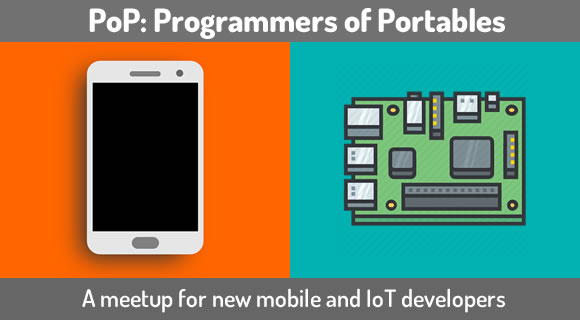


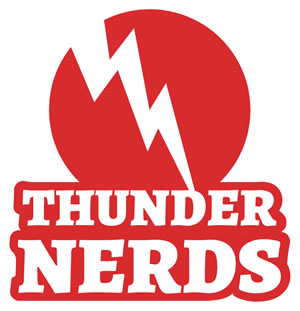


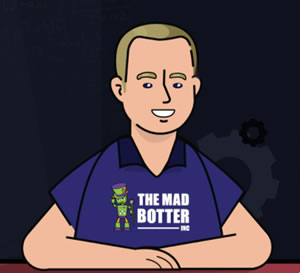 The Mike Dominick Show
The Mike Dominick Show
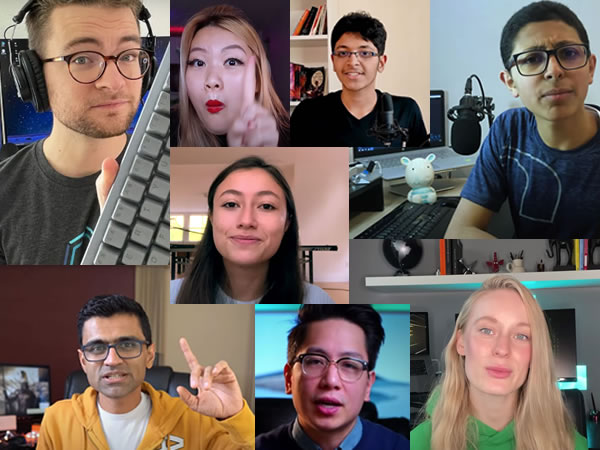

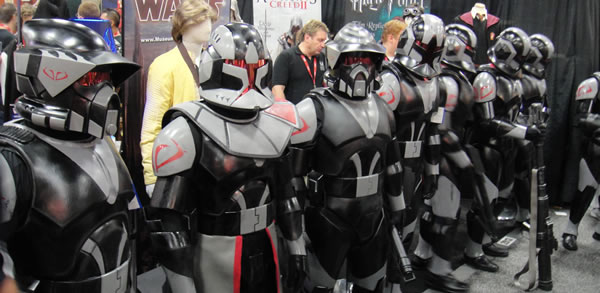
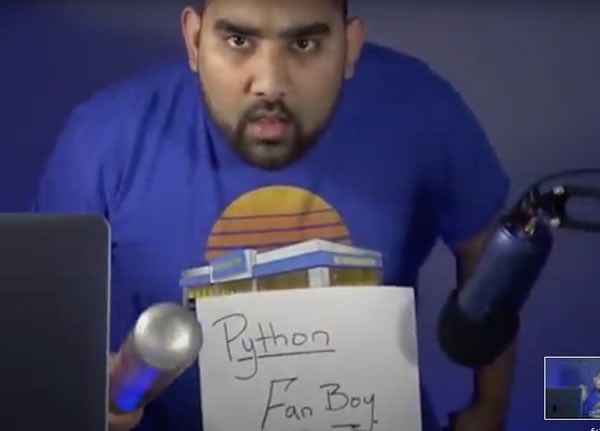
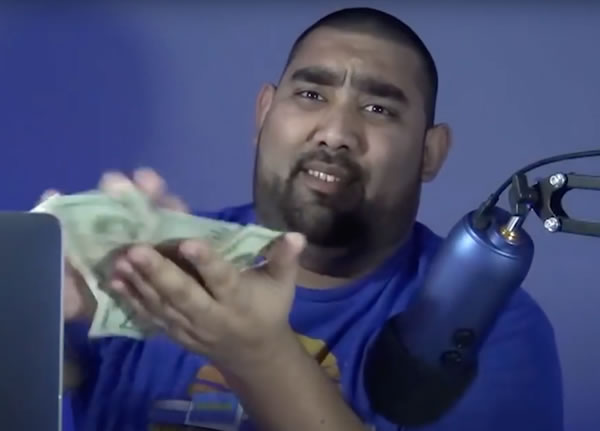


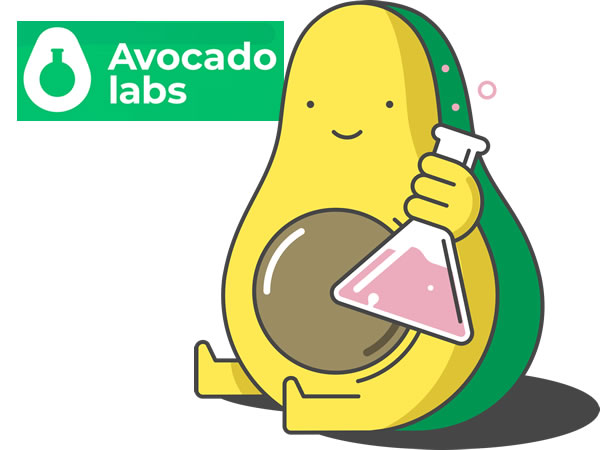 Avocado Labs
Avocado Labs